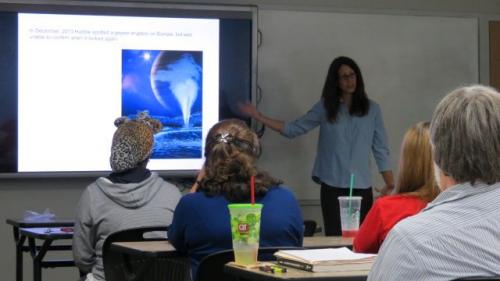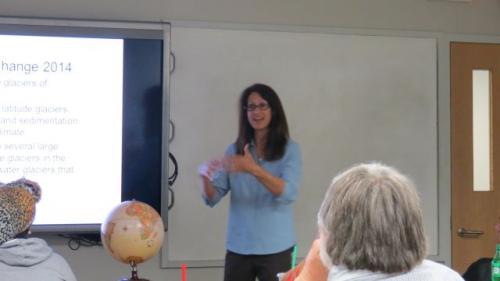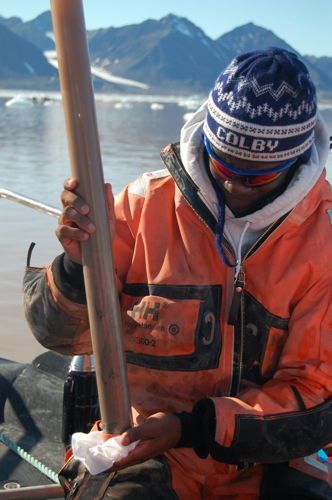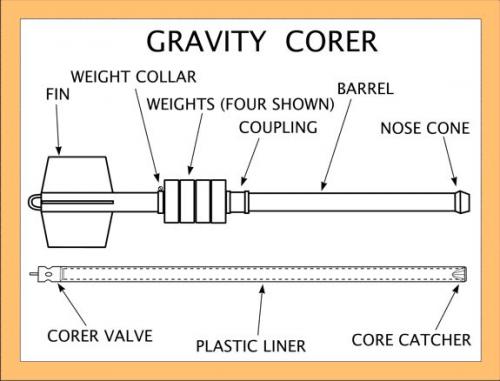Astronomy Night
I had a wonderful time as a guest teacher for an evening astronomy class at Georgia Gwinnett College. Thank you, Georgia Gwinnett for having me and giving me the opportunity to talk about one of my favorite topics- our solar system! The lesson focus was on the gas giants, Jupiter, Saturn, Uranus and Neptune. Fun fact: On April 4th, the Cassini mission confirmed a regional ocean at the south pole of Encelades, a moon of Saturn, through measurements that revealed a gravity anomaly. The south pole is more dense than expected. Explanation= liquid water. (Liquid water is more dense than ice.) The ocean's interaction with the moon's rocky core could generate the chemical reactions and nutrients necessary for the evolution of life. Very cool.
 Talking about Europa with students at Georgia Gwinnett College
Talking about Europa with students at Georgia Gwinnett College
High Arctic Change 2014
I shared the upcoming expedition and how GGC students can become involved. A great conversation and interesting questions followed.
 Introducing High Arctic Change 2014
Introducing High Arctic Change 2014
Gravity Corer
John asked a great question about a picture I shared from the 2011 expedition showing use of the gravity corer: "What drives the gravity corer through sediment that deep?"
 Operating the gravity corer in 2011. Photo courtesy of Mark Goldner.
Operating the gravity corer in 2011. Photo courtesy of Mark Goldner.
The answer is in the name- gravity! The corer is weighted and well over 40 pounds. It falls under its own weight, using gravity to penetrate the soft sediment. The corer has an inner plastic liner that houses the sediment within the metal barrel and a core catcher to minimize sample loss. But the weights that help drive the corer into the sediment also make it difficult to pull the corer back up. A winch is used, but it still has to be lifted overhead in order to separate the sample from the device.
 Gravity corer. Photo courtesy of U.S. Geological Service.
Gravity corer. Photo courtesy of U.S. Geological Service.
All of this work is done to collect a sediment core like the one shown below. Back at the lab the plastic liner and core is split down the middle and opened. Cores capture a time capsule that can span the past thousands of years. Through analysis of the layers and their content, we can improve understanding of past climate systems and predict patterns for the future. Thanks for the great question!
 Sample sediment core. Photo courtesy of International Atomic Energy Agency.
Sample sediment core. Photo courtesy of International Atomic Energy Agency.

Comments